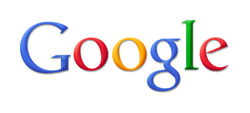 Each search engine uses a different algorithm—the software that determines which pages turn up for any search. That’s why results on Google are different from those of Bing, and other competing search engines. As a significant business asset, these algorithms are kept secret, though it is suspected they receive updates often. Generally, the updates are minor, and difficult for the average user to notice. Google rolled out an update last week, but this one was different, and people took notice.
Each search engine uses a different algorithm—the software that determines which pages turn up for any search. That’s why results on Google are different from those of Bing, and other competing search engines. As a significant business asset, these algorithms are kept secret, though it is suspected they receive updates often. Generally, the updates are minor, and difficult for the average user to notice. Google rolled out an update last week, but this one was different, and people took notice.
On March 24th, Amit Singhal, Google Fellow, and Matt Cutts, Principal Engineer at Google posted Finding more high-quality sites in search on the Official Google Blog.
“Many of the changes we make are so subtle that very few people notice them. But in the last day or so we launched a pretty big algorithmic improvement to our ranking—a change that noticeably impacts 11.8% of our queries—and we wanted to let people know what’s going on. This update is designed to reduce rankings for low-quality sites—sites which are low-value add for users, copy content from other websites or sites that are just not very useful. At the same time, it will provide better rankings for high-quality sites—sites with original content and information such as research, in-depth reports, thoughtful analysis and so on.”
While it is admirable for Google to work to improve user experience, this latest change was not proactive, but a reaction to complaints by search users. For some time now, many listings on the SERP (Search Engine Results Pages) have been of poor quality; often filled with pages from websites designed only to attract visitors to register banner ad impressions. Some examples are websites that solely republish content (such as press releases), write “original” low quality content (such as many “how to” websites) or “scrape” content from other websites, often yielding pages full of search phrases that amount to little more than gibberish.
Since SERP position is a zero-sum-game, for every loser, there will be a corresponding winner, and the intention by Google was for the higher quality websites to rise to the top of the SERPs. Remember when it comes to search, we can't all be winners—the only way to move up the results is for others websites to move down.
From the blog post, it seems that Google will be penalizing entire websites, rather than content on a page-by-page basis. Unfortunately, since we don't know what the criteria used to identify the “low quality sites,” it is likely that honest and well meaning website owners may get caught in the wide net, and penalized along with the obvious offenders.
To be a winner with the “new and improved” Google, we recommend the SEO basics: quality original content, as well as off-page optimization, such as securing relevant incoming links from quality websites.
The prospect of seeing “black hat SEO” generated “low-quality sites—sites which are low-value” websites penalized is a welcome change by those who practice respectable or “white hat SEO,” as well as to the average Google search user.
Also of note, Google offers different search results for the different localized versions of the search engine. As of this writing, this change has been rolled out only in the United States. While the blog posts states Google has a “plan to roll it out elsewhere over time,” no schedule was offered.
At DesignHammer, we have noticed movement in search results for keyword phrases targeted by some of our clients. We will continue to monitor the results, and keep our SEO clients apprised of the situation.

Comments
Hi,SEO plays a vital role to
Hi,
SEO plays a vital role to get better PR. To build traffic we all need good quality links linking back ti our site. One should take enough care regarding the content that is placed on the website!
Add new comment